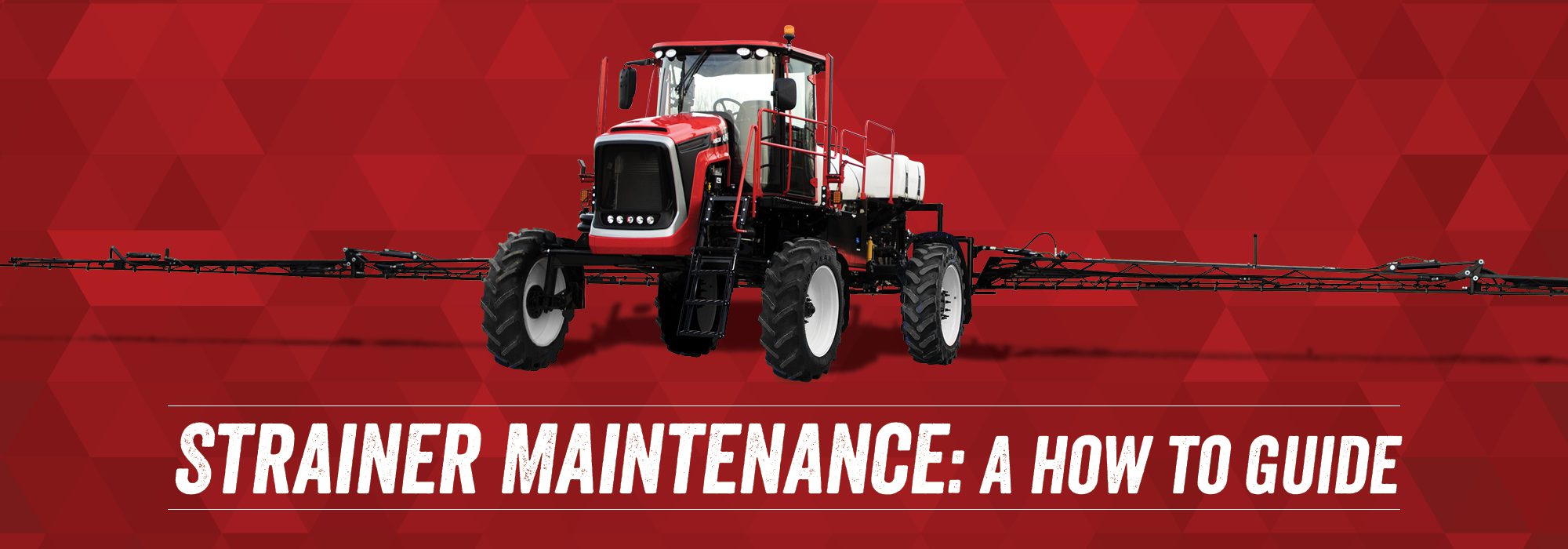Prevent crop damage with thorough strainer maintenance
Spraying even trace amounts of the wrong chemical in your fields can be costly. When you’re lax with inspecting and maintaining your sprayer’s strainers, you run the risk of that happening. Get our crop-saving tips on how to properly maintain the strainers on your self-propelled sprayer from the Apache experts.
Why strainers matter
Strainers, like tip nozzles, are inexpensive components to any sprayer, but they have a major influence on the performance of a sprayer, making it important to take the time and energy to maintain them well, according to Apache Sprayers Service Technician and Application Parts Specialist Chris Weaver. Chemical residue left in strainers – whether made from plastic or stainless steel – that aren’t cleaned and well-maintained can enter spraying streams later on when applying a different product, sometimes leading to crop damage that can cut yield potential.
“Clean-out is so important. If you leave some of those chemicals in there all year long, it’s not only going to potentially affect what you’re spraying, but also damage the strainers themselves, Weaver said. “You may be moving from a GMO field to a conventional field, and the residual that stays in the screens will be applied, especially if the strainers are snagged or damaged.”
One cleanout strategy
Strainer maintenance is a process that starts once the sprayer’s work is done for the season. The best time to remove, inspect and clean existing strainers is when you’re winterizing your sprayer at the season’s end. Weaver recommends a simple, low-cost procedure using common household products to thoroughly clean strainers.
“I will pull them out and put them in a five-gallon bucket of water and dish soap, then soak them in that for a while to degrease them,” he said. “Then, I dry them off and keep them inside during the winter to prevent freezing damage. In the spring, I blow them out and check for any damage.”
That damage typically comes in the form of holes in the screen that can render the strainers ineffective in their primary function.
Inspect strainers regularly
Regularly inspecting strainers is the best way to know they’re performing optimally. That includes strainers at T- and Y-joints in the sprayer booms, as well as at the tips. Be aware of different mesh numbers and types in the different strainers, as it’s important information to keep in mind when diagnosing overall strainer health and performance, Weaver said.With stainless steel strainers, it’s important to check for rust. “Stainless steel strainers are not completely stainless, especially when spraying a lot of fertilizer, they can develop a little rust,” Weaver added.
“Strainers develop holes over time, so you want to check them every time you clean out your sprayer,” Weaver said. “Visually inspect them a couple times a year. And, they can get snags in them if you just try to force them into place. It’s good to keep an eye on them, especially if you are switching between fields and chemicals a lot.”
Finally, in inspecting your sprayer’s strainers, be gentle. Even the slightest malformation or damage can seriously alter a strainer’s performance.
What else should you account for in maintaining your Apache Sprayer? Start with our annual maintenance checklist.



